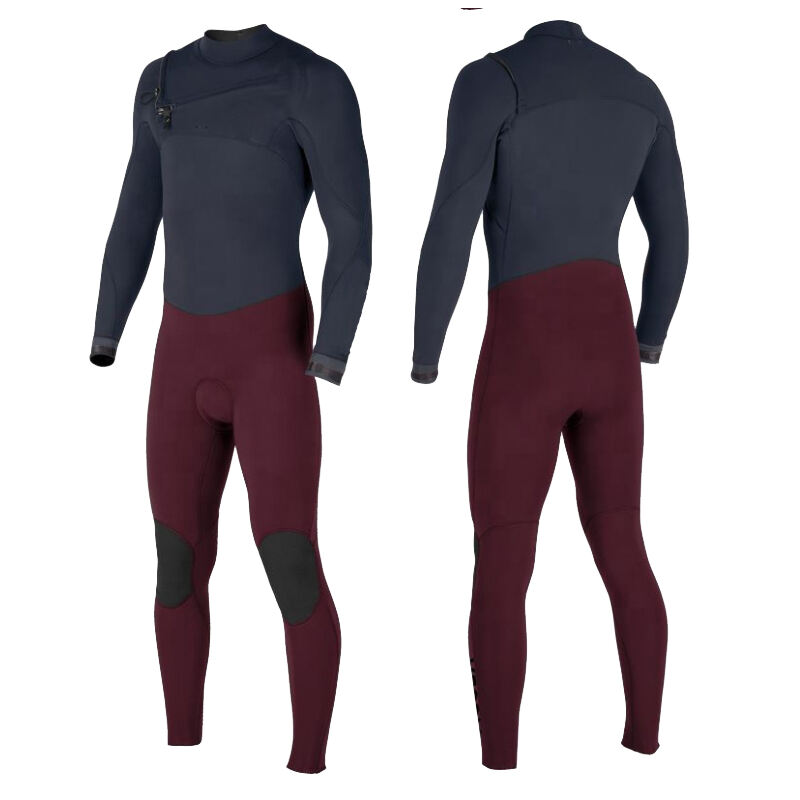Výběr vhodného neoprenového obleku zlepší vaše vjemy, ať už plavete, surfuete, nebo potápíte. Tato příručka vám poskytne základní kroky potřebné k výběru neoprenového obleku, který odpovídá vašim požadavkům.
Typy potápěčských obleků
Různé typy neoprenových obleků jsou dostupné pro různé aktivity a druhy vody. Nejznámější jsou celé obleky, šortky a obleky bez rukávů. Celé obleky poskytují maximální ochranu před chladnou vodou, zatímco šortky jsou pohodlnější pro pohyb a jsou vhodné pro teplejší vody. Je velmi důležité znát typ neoprenového obleku odpovídající vaší aktivitě, stejně jako teplotu vody.
Materiály
773% Potápěčské obleky jsou vyrobeny z neoprénu kvůli jeho špatným izolačním vlastnostem. Jakost však může být rozdílná. Tloušťka neoprenového obleku se pohybuje od 2 mm do 7 mm. Větší tloušťka zaručuje lepší izolaci proti chladu, ale ztěžuje pohyb. Výběr by měl být kompromisem mezi preferovanou teplotou a pohodlí ve vodě.
Přiléhání potápěčského obleku
Aby potápěčský oblek fungoval efektivně, musí těsnit – nesmí být ani příliš volný, ani příliš těsný. Při oblékání obleku se ujistěte, že kolem krku, zápěstí, loktů a kotníků není žádná mezera, protože voda může proniknout dovnitř. Zkontrolujte také, zda jsou ramenní a kolenní části obleku pružné, aby umožňovaly volný pohyb.
Funkce, na které si musíte dát pozor
Dnešní potápěčské kombinézy jsou vybaveny mnoha funkcemi, které mají pomáhat s komfortem a výkonem. Zvýšený komfort a odolnost lze dosáhnout díky zesíleným švům, které zabraňují průniku vody. Tepelné výstelky, rychle se schnoucí látky a dokonce i kapuce pomáhají udržet teplost a komfort v chladných podmínkách. Posuďte, které funkce budou mít pro vaše konkrétní potřeby nejvyšší prioritu.
Údržba a servis
Aby bylo možné udržet požadovaný výkon potápěčské kombinézy, je nezbytné věnovat pozornost její údržbě, čímž prodloužíte její životnost. Po každém použití si zvykněte kombinézu opláchnout čistou vodou, abyste odstranili sůl, chlor a písek. Potápěčskou kombinézu byste měli také pověsit do zastíněného místa, aby se předešlo působení přímého slunečního záření a poškození materiálu. Pokud jde o jiné materiály, pravidelně kontrolujte místa se známkami poškození a okamžitě je opravte, abyste předešli dalšímu poškození.
Trendy a přehledy v odvětví
Ve vývoji potápěčských obleků i plaveckého oblečení dochází k neustálému vývoji. Můžete být jisti, že více společností investuje do materiálů šetrných k životnímu prostředí, aby snížily svůj ekologický dopad. Díky některým technologickým inovacím jsou ekologické potápěčské obleky pružnější a lehčí, přičemž zachovávají pohodlí. Tyto informace vám pomohou učinit správné rozhodnutí pro vaši příští koupi.

